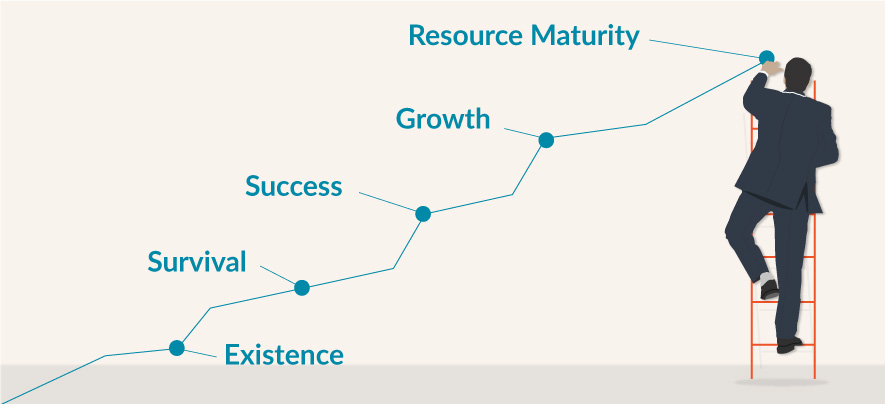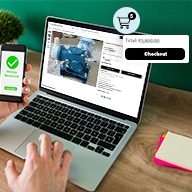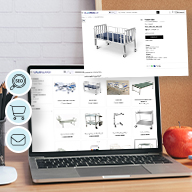Recognising the 5 Stages of Small Business Growth

Business Development
516 week ago — 4 min read
Starting a business is indeed a big accomplishment; but keeping the business running (and thriving) is the greater challenge. As a small business owner, you may wonder what action you must take to expand your business and where your business stands in the growth cycle. A landmark and illuminating study by Harvard Business Review has defined the five stages of small business growth. Recognising these stages, can help small business owners and entrepreneurs tackle problems and opportunities that arise at different stages of their business.
Find out where you stand in the five stages of small business growth & how you can leverage each stage.
1. Existence
In the nascent phase, you require passion, capital and customers for the business to take off. Here are sometips to make your business launch ready. The entrepreneur or business owner plays a pivotal role at this stage. She/he has to supervise all aspects of the business, set processes in place and find customers.
Key factors for ensuring success: Success at this stage depends largely on finding customers. It helps to have a sound business plan and marketing strategy. The primary goal is to survive. The companies that are able to thrive in this phase enter the next stage of business growth.
2. Survival
The business enters this stage when it has acquired and engaged a viable number of customers.
Key factors for ensuring success: At this stage, it is important to acquire customers and examine the return on investment (ROI). The major shift at this stage is the focus on profitability. Business knowledge must keep pace with the changing market and a steady stream of customers must be acquired in the survival stage.
3. Success
When a company is economically viable and generating consistent profits, it enters the success stage, and it can remain at this stage for a long while.
Key questions an entrepreneur must ask himself: The choice is whether to continue to grow or maintain the success achieved up to this stage. Thus, enjoying the fruits of one’s labour and maintain the current level of success or seeking further expansion become the key questions that entrepreneurs must ask themselves in this phase.
4. Growth
In this stage, the business requires increase in capital in order to cater to the increased number of customers. This entails more human resources, equipment and efficient processes.
The decision an entrepreneur must make at this stage: This is the stage when a small business can choose to become a big company. If you opt to expand, management and financing will become your key focus. This is a crucial time. Just because you were able to build a successful company doesn’t mean you have what it takes to become a profitable ‘big’ company. Rapid expansion comes with its own set of inherent challenges and risks.
5. Resource Maturity
If you manage to create a ‘big’ company, handling your financial resources will be one your biggest challenges. Once a small business is poised for diversification, it is said to be in the stage of ‘Maturity’.
Growth pattern in this phase: A big company expands at a slower pace. Therefore, the need to diversify and to expand the existing customer base becomes vital. At this stage, parts of the business are at varying stages of business growth.
Grasping the stages of small business growth and their inherent challenges can help you ascertain where you are in the growth cycle, and help you gauge what’s going to be needed to succeed. For instance, business owners have to devote a huge amount of time during the initial start-up phase of the company, and then have to learn to delegate and diversify as the company grows.
As Paul Ryan says, “Behind every small business, there’s a story worth knowing.” Share with us your ‘story’ and challenges of helming a growing business.
Posted by
GlobalLinker StaffWe are a team of experienced industry professionals committed to sharing our knowledge and skills with small & medium enterprises.
View GlobalLinker 's profile
Most read this week
Trending
Ecommerce 4 days ago













Comments
Share this content
Please login or Register to join the discussion